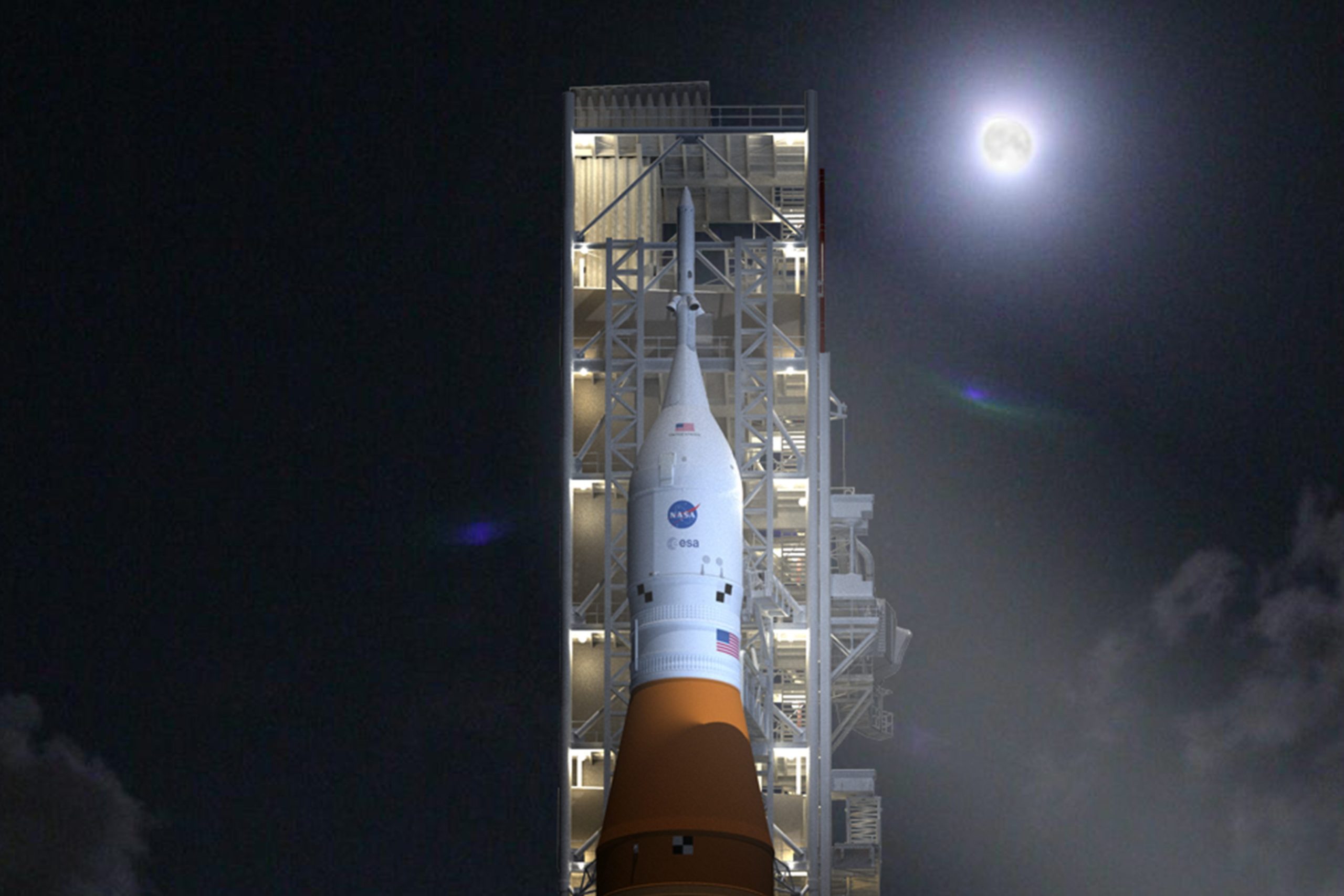
Nighttime check out of NASA’s Room Launch Process (SLS) in the Block 1 configuration, which will carry an Orion spacecraft past the Moon, on the mobile launcher. NASA
Just after ending a place partnership spanning two a long time, the United States and Russia are now officially rivals once more in a new room race to conquer the Moon. On Tuesday, Russia’s house company, Roscosmos, introduced that it had entered an arrangement with China to establish an “International Lunar Science Station†on the Moon. The pact was signed by Zhang Kejian, director of the China National Place Administration (CNSA), and Dmitry Rogozin, the head of Roscosmos.
The partnership marks a turning level in lunar competitors involving the U.S. and China. Both of those countries are in search of global associates to assist establish foreseeable future missions with an greatest aim to set up a extensive-term human existence on the Moon. China has been launching lunar missions considering that 2007. NASA didn’t finalize its lunar plan, known as the Artemis Software, until 2017, nonetheless the American area company has a a lot more formidable timeline to land people and construct a permanent foundation on the Moon.
Underneath is a comprehensive comparison of China’s Chang’e Project and NASA’s Artemis Software:
China’s Chang’e Project
The CNSA unveiled some facts of its lunar exploration plan, also acknowledged as the Chang’e Undertaking (named following the Chinese moon goddess Chang’e), at a conference of the Committee on the Peaceful Works by using of Outer House (COPUOS) very last August.
China aims to establish a human existence on the Moon in the 2030s, with options to develop lunar orbiters, landers, rovers and sample return spacecraft to be released by Extensive March rockets. The central piece of the system is the International Lunar Science Station (ILRS) at the Moon’s South Pole, which is believed to consist of wide reserves of water ice.
Since 2007, China has released five Chang’e missions, sending two orbiters, two rovers and a return mission to the Moon. The Chinese place company has prepared 3 extra Chang’e missions (CE-6, -7 and -8) and potential global missions to form the simple set up of ILRS.
See Also: This Startup Designs to Construct a Place Lodge and Switch the Worldwide Space Station
The European Place Agency has expressed fascination in taking part. “At ESA we are subsequent the Chinese lunar exploration strategies incredibly carefully in get to see the place our respective programmatic desire could meet, mainly the CE-6, -7 and -8 missions but also the ILRS initiative,†ESA’s worldwide relations administrator Karl Bergquist advised SpaceNews last year.
NASA’s Artemis Program
NASA has a much more urgent timeline than China to provide people back again to the Moon. By the Artemis Application, the U.S. options to land American astronauts on the Moon by 2024 and establish a everlasting place station, known as Lunar Gateway, in lunar orbit. The agency is also focusing on the lunar South Pole for a science foundation to tap its drinking water source.
NASA has been experimenting with numerous systems connected to the Artemis system in a examination sequence called Environmentally friendly Run because 2017. The first mission, dubbed Artemis 1, is envisioned to fly in late 2021.
The area agency has enlisted a roster of private space businesses, which includes Elon Musk’s SpaceX and Jeff Bezos’ Blue Origin, to establish important spacecraft for long term missions. And, like China, it is is in search of associate nations, as a result of the “Artemis Accords,†a established of ground regulations for nations to take a look at the moon and other foreseeable future deep-area missions.
NASA has invited all 15 ISS partners, which include Russia, to join the exertion. 7 international locations have signed up by much: Australia, Canada, Japan, Luxembourg, Italy, the United Kingdom, and the United Arab Emirates. Former NASA Administrator Jim Bridenstine has claimed he’s open to collaborating with all nations, even China, if legislation permits. (NASA is not permitted to do the job with China beneath the Wolf Amendment.)
At a conference past October, Roscosmos’ Dmitry Rogozin, Russia’s previous Deputy Key Minister, complained that the Artemis Software is “way too U.S.-centric.†So Russia is possible to chorus from collaborating in it on a large scale.â€
On the very last working day of 2020, NASA printed a short movie (embedded under) hyping its options for 2021, highlighting the Artemis program as the central topic of the preview.

